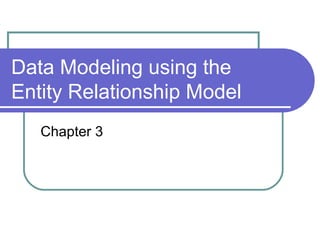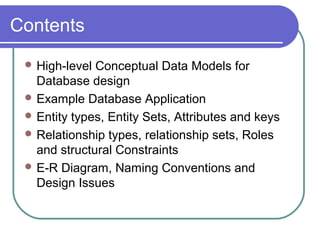The document describes concepts related to entity relationship modeling including:
- Entity types represent real world objects like employees, departments, etc. and have attributes.
- Relationship types define relationships between entity types like works_for between employees and departments.
- Keys uniquely identify entities and attributes can be single/multi-valued, simple/composite.
- The example models a company database with entities for departments, projects, employees and dependents along with their attributes and relationships.


































